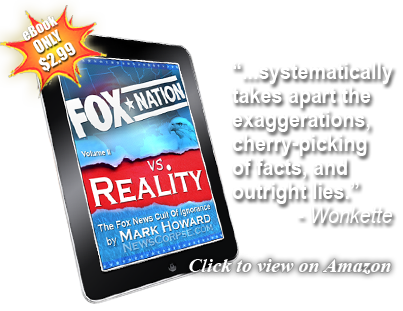During his 2024 campaign, Donald Trump promised his cult followers that he would exact retribution for whatever imagined wrongs he thought had been waged against him. He swore to get revenge on the organizations and individuals who dared to criticize him and get in the way of his mission to subvert the Constitution and become America’s first dictator. On Fox News they described him as being “out for blood.”
Click here to post this article on Twitter or Click here to post on Bluesky

Now Trump’s Federal Trade Commission (FTC) is playing its part to fulfill Trump’s promise. They have just announced that they are launching an investigation of the media watchdog organization, Media Matters for America. Media Matters has been a staunch defender of the Constitution’s protections of the free press, and a stalwart opponent of efforts to disseminate ultra-rightist propaganda and to suppress honest journalists.
This latest weaponization of government by Trump is clearly intended to threaten, not just Media Matters, but any critic of Trump or his administration. He has already launched, or threatened to launch, investigations against Barack Obama, Hillary Clinton, Joe Biden, James Comey, Leticia James, Adam Schiff, Harvard, ActBlue, all news networks, and many more. Now Media Matters has been added to Trump’s Enemies List. As reported by CNN…
“The Federal Trade Commission on Wednesday sent Media Matters for America a letter demanding communications between the progressive media watchdog and advertising entities as the commission probes whether the watchdog colluded with advertisers to pull funding from Elon Musk’s X.”
The FTC’s action is a malicious attempt to exploit the legal system to punish Media Matters with a fishing expedition in the hopes of finding evidence that they colluded with advertisers to pull their funding from Twitter/X. If successful, it could set a terrible precedent that would handcuff any individual or organization that engaged in political organizing.
One of the issues that Media Matters has reported on for several years is how advertising on social media platforms such as Twitter and Facebook has often appeared adjacent to offensive content that is racist, or that incites violence, or that is otherwise repugnant and harmful to the advertiser’s reputation. The result has been that some advertisers altered their media buys to avoid such associations.
This was an especially troublesome problem with X/Twitter after Elon Musk bought the company. His policy of tolerating hate speech and restoring the accounts of known white supremacists and neo-Nazis resulted a much higher incidence of ads showing up next to that noxious content. But when Media Matters reported this, Musk sued them alleging that the report was “manufactured,” despite Media Matters delivery of documentation. Media Matters president, Angelo Carasone, responded to the FTC’s letter saying that…
[The Trump administration has been] “abusing the power of the federal government to bully political opponents and silence critics. It’s clear that’s exactly what’s happening here, given Media Matters’ history of holding those same figures to account. These threats won’t work; we remain steadfast to our mission.”
Trump’s Reign of Terror is escalating as his thirst for revenge continues to boil over. And the victims will not just be politicians and political groups. His determination to clamp down on any and all dissent will eventually make victims of everyone who doesn’t kneel before Dear Leader and succumb to his demands. So don’t fool yourself. That could be you.
RELATED STORIES:
- GET OUT OF HERE! Crybaby Trump Blows Up at NBC Reporter and Threatens to Investigate the Network
- Trump Watches MSNBC? Yep! And It’s Driving Him Crazy. So He Threatens to Tax and Penalize Them
- MAGA GOP Reps Deny that Donald ‘I Am Your Retribution’ Trump Has an ‘Enemies List’ (He Does)
Be sure to visit and follow News Corpse
on Twitter and Facebook and Bluesky and Threads.And check out my books on Amazon:
Fox Nation vs. Reality:
The Fox News Cult of Ignorance.Thanks so much for your support.



